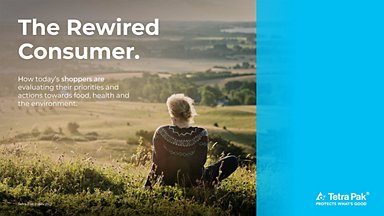New routines and rituals
According to a classic pre-pandemic psychological research study at Duke University, life revolves around habit: “approximately 45% of everyday behaviors [tend] to be repeated in the same location almost every day”. The pandemic changed or swept many such behaviours away at a stroke. Without the old commutes, trips to the gym and coffee shops, and post-work socialising, consumers have developed new routines and rituals, often either replicating or replacing the old normal.
Opportunity – Snacking time
A key element of these new routines and rituals is snacking, which has seen a huge upsurge, with 44% of respondents saying they are snacking more often than at the start of COVID-19. The #1 driver is comfort, with more than half (52%) of consumers globally saying snacking has been a “lifeline” during the pandemic. Other drivers include breaking up the day – nearly a third say they are snacking during working breaks more than pre-pandemic – as well as providing energy and health benefits, and replacing meals.
The increase in snacking is being particularly driven by younger age groups and by emerging markets. Key product categories identified in our Demand Spaces research include white milk and drinking yoghurt.
Another key product that has seen consumption growth due to snacking is cheese. More than a third of participants in our 2021 global cheese study say that their consumption has increased overall since the pandemic, rising to 50% in Asia Pacific – and 60% in India. While main meals remain the key consumption occasion, in-home snacking is a growing trend, with cheese widely enjoyed while watching TV (up 36%) or when enjoying a drink (up 35%) and mid-morning/mid-afternoon (up 32%).


